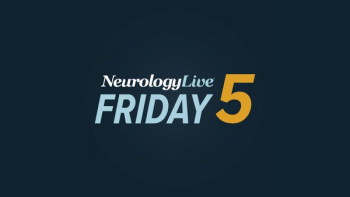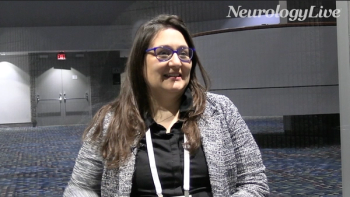
Study Identifies CSF 14-3-3 Protein Levels as Neuroaxonal Biomarker for NMOSD
Key Takeaways
- Elevated CSF 14-3-3 protein levels in AQP4-NMOSD patients correlate with disease severity and predict poor recovery, indicating potential as a neuroaxonal damage biomarker.
- CSF 14-3-3 protein levels are higher in AQP4-NMOSD compared to MS and MOGAD, but not between MS and MOGAD, limiting its differential diagnostic utility.
In a new study, findings show elevated CSF 14-3-3 protein levels in AQP4-NMOSD, suggesting its potential as a biomarker for neuroaxonal damage and disease severity.
In a recently published retrospective cohort study, patients with aquaporin-4-antibody-positive (AQP4) neuromyelitis optica spectrum disorder (NMOSD) had higher 14-3-3 protein levels in cerebrospinal fluid relative to those with multiple sclerosis (MS) and myelin oligodendrocyte glycoprotein disorder (MOGAD). These findings highlight the potential of CSF 14-3-3 protein levels as a biomarker of neuroaxonal damage in AQP4-NMOSD, supported by their correlation with disease severity and their ability to predict poor clinical recovery.1
Published in Neurology, the multicentric study comprised 29 patients with AQP4-NMOSD, 43 with MOGAD, and 62 with MS, each with 14-3-3 protein levels quantified using ELISA assays. When comparing the groups, CSF levels of 14-3-3 protein were higher in those with AQP4-NMOSD (median interquartile range [IQR], 4471 [3323-12,303] AU/mL) compared with those with MS (3170 [IQR, 2523-3749; P-adjusted = .001) and MOGAD (3112 [IQR, 2358-3875]; P-adjusted = .004). Notably, there were no significant differences between those with MOGAD and MS (P-adjusted = .989).
The study, led by a number of notable authors including Manuel Comabella, MD, PhD, head of the Neuroimmunology Laboratory at the Fundació Institut de Recerca del HUVH, spanned 5 European Centers. Coming into the trial, patients with AQP4-NMOSD were older at sampling (P <.001), presented more frequently with myelitis (P = .002), and displayed a higher Expanded Disability Status Scale (EDSS) during attacks (P <.001).
In the study, 14-3-3 protein levels were found to be associated with attack severity and predict final disability in patients with AQP4-NMOSD with myelitis. In this group, those who reached a final EDSS of 6 or greater (n = 11) had higher baseline levels than those with a final EDSS score less than 6 (n = 18; median, 12,303.35 [IQR, 6067.55-21,932.24] vs 3391.44 [IQR, 2829.43-4226.36], respectively; P-adjusted = .003). Similar results were found when selecting patients with AQP4-NMOSD with sampling at the first attack (EDSS ≥6.0 [n = 7]; EDSS <6.0 [n = 8]; P-adjusted = .022).
"While serum GFAP is a well-established astroglial biomarker for diagnosing and predicting relapses in AQP4-NMOSD, with the advantage of noninvasive sampling, CSF 14-3-3 may provide complementary diagnostic and prognostic value," Comabella et al wrote. "However, its moderate sensitivity (60%) for disease discrimination and lack of association with relapse risk limit its stand-alone clinical utility, reinforcing the need for a multibiomarker approach."
READ MORE:
The study authors continued, "Clinically, serum GFAP could facilitate early AQP4-NMOSD diagnosis and relapse prediction, optimizing maintenance therapy decisions. Meanwhile, CSF 14-3-3, because of its high specificity, may aid in differential diagnosis in ambiguous cases, particularly in myelitis. Furthermore, its association with long-term disability suggests that it could help identify patients at higher risk of poor recovery after a myelitis attack, supporting the need for more intensive acute treatment or adjustments in long-term therapy. This combined approach could enhance diagnostic accuracy and support personalized treatment strategies."
In the study, patients with AQP4-NMOSD who presented with myelitis (n = 15) demonstrated higher CSF levels of 14-3-3 protein compared with optic neuritis (ON; n = 9; 12,303 [IQR, 4795-17,202] vs 3357 [IQR, 2893-3834], respectively; P <.001). This was considered notable, as there were no differences between the 3 conditions for those with ON presentations. In a subgroup analysis focused on myelitis attacks, higher CSF levels of 14-3-3 protein were observed in those with AQP4-NMOSD relative to the MOGAD and MS groups (P <.001).
In univariate analysis, CSF 14-3-3 levels predicted final EDSS ≥ 6.0 (OR, 10.41 [CI, 2.63-81.12]; P <.001), but this association lost significance after adjusting for age, EDSS at sampling, and post-sampling relapses. However, in patients with myelitis, 14-3-3 levels remained a significant predictor of this outcome after adjusting for chronic treatment (OR, 9.48 [CI, 1.69-194.34; P = .041), while no association was found with annualized relapse rate (ß = –0.02; CI, –0.57 to 0.53; P = .932).
"14-3-3 levels were comparable between MS and MOGAD, likely because of a similar degree of neuroaxonal damage, limiting its utility for distinguishing these conditions. Alternative biomarkers directly related to disease-specific pathophysiology, such as complement factors and cytokines, may offer better diagnostic precision as recently reported," the study authors wrote. "Future studies including diverse myelitis etiologies could further elucidate the specificity of 14-3-3 protein. Other limitations of the study include its retrospective design and the lack of longitudinal assessment because of the intrinsic difficulties in accessing CSF samples."
REFERENCE
1. Villacieros-Alvarez J, Sepulveda M, Valls-Carbo A, et al. Cerebrospinal 14-3-3 Protein levels as a neuroaxonal biomarker in aquaporin-4 antibody–positive neuromyelitis optica spectrum disorder. Neurology. 2025;12(5). doi:10.1212/NXI.0000000000200432
Newsletter
Keep your finger on the pulse of neurology—subscribe to NeurologyLive for expert interviews, new data, and breakthrough treatment updates.































